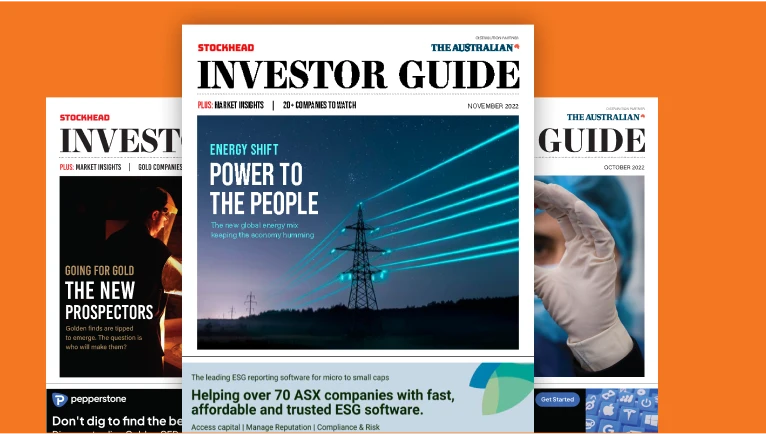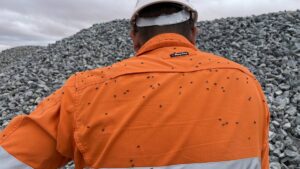The treasure the big boys left behind in NSW’s Lachlan Fold Belt

Canny junior explorers have been piecing together prospects in one of the world's richest mineral provinces. Pic: Getty Images
- Alkane’s Boda find put the Lachlan Fold Belt back on the map in 2019. Today, with better geological models and modern exploration, smart capital is flowing into the region
- The Macquarie Arc, east of the Lachlan Fold Belt, is Australia’s leading porphyry belt and home to major mines
- It is also home to a new generation of ASX juniors including Magmatic Resources and Waratah Minerals, with many others close by looking for the next major gold-copper discovery
Rising copper prices, gold’s stellar run and some of the world’s most promising geology have created the perfect storm for investors willing to bet on Aussie juniors, proving that sometimes the best opportunities are the ones hiding in your own backyard.
Alkane Resources’ (ASX:ALK) Boda discovery put NSW’s Lachlan Fold Belt on the map a few years ago before the region seemingly slipped back into the shadows. But smart money is returning to the fold, with new technology and geological understanding triggering a fresh wave of companies keen on chasing the region’s staggering gold and copper bounty.
More than 110Moz of gold discoveries have been made in the area to-date in and around the Central Lachlan and Cobar mineralised districts.
To the east of the Lachlan Fold Belt is the Macquarie Arc, which has been described as Australia’s foremost porphyry belt, home to powerhouse mines like Evolution Mining’s (ASX:EVN) Northparkes and Cowal mines, and Newmont Corporation’s (ASX:NEM) Cadia-Ridgeway (the second largest gold mine in Australia after its Boddington operation in WA’s South West).
The western reaches of the Lachlan Fold Belt host the Cobar Superbasin, where MAC Copper (ASX:MAC) acquired Australia’s highest-grade copper mine, the CSA mine, for US$1.1 billion from Glencore and is now selling it for a similar price to South Africa’s Harmony Gold.
Consolidation and M&A
Magmatic Resources (ASX:MAG) acquired its Lachlan Belt portfolio in 2014 from Gold Fields at a time of peak consolidation in the area, when major mining companies were realigning their portfolios in a weak gold price environment.
Notable transactions included Rio Tinto’s 2013 sale of its 80% stake in the Northparkes copper-gold mine (Sumitomo owned and continue to own 20%) to China Molybdenum for US$820m and Barrick Gold’s 2015 divestment of the Cowal gold mine to Evolution Mining for US$550m.
Cowal’s resource base stood at 3.4Moz when Evolution acquired it. Today that figure has nearly tripled to 9Moz.
By 2023, Newmont had acquired Newcrest Mining in a US$16.8 billion deal, drawn largely by the world-class Cadia Valley mine, which contains 17Moz of gold and 3.6Mt of copper in ore reserves.
Later that year, Evolution Mining purchased China Molybdenum’s 80% interest in the Northparkes copper-gold mine for US$475m.
In an interview with Stockhead, MAG managing director David Richardson said Gold Fields had been actively exploring the region in search of tier-1 discoveries, assembling a portfolio of projects that shared key geological features with major nearby mines.
As most major players began stepping back from greenfields exploration to concentrate on near-mine development, Barrick offloaded several gold assets in Western Australia to Gold Fields, an opportunity that ultimately enabled Magmatic to secure their Lachlan Fold Belt projects.
“We believed there would be a gold and copper recovery, and if you wanted to find a tier-1 gold-copper project, the East Lachlan offered the greatest potential,” Richardson said.
“Importantly, the Cadia, Northparkes and Cowal mines are all on the region’s two volcanic belts, and Gold Fields’ portfolio was on these volcanic belts and in close proximity to these mines.
“Gold Fields had spent ~A$14m on exploration including detailed geophysics, geochemical and target generation drilling so we were able to acquire advanced exploration projects with a list of ranked targets,” he added.
Peaks and troughs
While Magmatic were lucky enough to inherit Gold Fields’ exploration office in Orange, Richardson said having a portfolio of tier-1 projects (comprising the Wellington North, Parkes, Myall and Moorefield assets) comes with its challenges as a junior explorer.
“The last 10 years has been difficult for junior explorers to raise money and gain shareholder traction, plus porphyry copper-gold deposits are known for their large size and low grade, making them harder to develop,” he said.
“We knew we had to focus on the two smaller projects, while advancing our larger projects to a stage they would be attractive to majors.”
At IPO in May 2017, the company joint-ventured its Parkes project with JOGMEC, the Japanese governments resources agency, which Richardson said largely kept it going during the lean years of 2017-2020.
“As a small company we were nimble and able to pivot our focus on our Wellington North project post Alkane’s Boda discovery, and our exploration there has developed multiple exciting prospects,” he added.
The company decided to demerge its subsidiary Australian Gold and Copper (ASX:AGC), which contained the Moorefield asset, and acquired two complementary projects before listing AGC on the ASX.
It then undertook a major drilling campaign at the Myall project and defined a resource of 293,000t of copper, 237,000oz of gold and 2.8Moz of silver, equating to 354,000t of copper metal equivalent.
“We believed we needed a partner to further develop Myall, so in March 2024 after an expression of interest process we successfully attracted Fortescue subsidiary FMG Resources and agreed a farm-in/joint venture agreement,” Richardson said.
“In the past 12 months we have put over $2m into the ground advancing the project with Magmatic as operator.
“Our approach has been to try and advance all of our projects at the same time, recognising which projects we go alone on and which projects need a partner.
“At all times being nimble enough to put focus on a project given exploration success or other opportunities such as the recovery in the copper price.”
That conviction has certainly paid off, with historically strong gold, silver and copper prices all boding well for Myall’s future development.
Other ASX explorers in the hood
Waratah Minerals (ASX:WTM) is another explorer in the area, focusing its exploration work along the margins of a major intrusive complex which hadn’t been focused on at the Spur project, despite it being an important setting of major deposits in the Lachlan Fold Belt.
Spur sits within 5km of Newmont’s Cadia Valley gold and copper operations and, according to Waratah, is a perfect example of both epithermal and porphyry styles of mineralisation.
“Often in districts around the Macquarie Arc you’ll see one or the other dominating, here we see evidence for both, and the hypothesis is that there is a connection genetically and spatially between the two styles of mineralisation,” Waratah MD Peter Duerden previously told Stockhead.
A three-rig drilling campaign, backed by an $8.4m capital raise in May, is currently underway focusing on the Spur gold corridor where epithermal gold mineralisation has been mapped 1km along strike.
Additional drilling will also continue to investigate the Breccia West prospect, where the nature of mineralisation host rock and assay intercepts show strong similarities to the nearby Ridgeway deposit.
Legacy Minerals Holdings (ASX:LGM) has started drilling at the Glenlogan JV project with S2 Resources (ASX:S2R) in its search for Cadia-style porphyry mineralisation.
Glenlogan is less than 55km from the Newmont’s Cadia (~50Moz gold, 10Mt copper) and was last explored by Rio Tinto (ASX:RIO) in 1996.
S2 is now drilling a 600-800m diamond hole to test several coincident geophysical anomalies identified in recent surveys consistent with porphyry style mineralisation.
Assays will likely take a further three to four weeks after the completion of the hole.
And Koonenberry Gold (ASX:KNB) owns about 1580km2 of granted exploration licences in the region, making it one of the most significant landholders in the belt.
At its Prince of Wales project, the company has uncovered a large +2.5km-long gold in soil anomaly at the Back Station Creek prospect.
Averaging more than six parts per billion gold with a peak value of 112ppb, the most recent rock chips from the project have outlined large-scale epithermal or porphyry gold and copper targets that have never been drilled.
An ~800m by 300m gold-in-soil anomaly above 6ppb with peak gold grades of 349ppb has also been picked up at Sybil, meaning Koonenberry has now defined two separate trends within the landholding.
With a cash balance of $10.35m, the company is focused on refining drill targets across multiple projects, including the Junee and Fairholme JVs where the world’s biggest gold miner – Newmont – is spending millions on exploration.
And the latest mover in the State’s Macquarie Arc is 2025 IPO LinQ Minerals (ASX:LNQ), which raised $10m to out towards drilling at the 3.7Moz gold and 1.2Mt copper Gilmore project, home to Gidjinbung, a major epithermal gold deposit near Temora last mined in 1996 when gold prices were ~$460/oz and undrilled since 2001.
LinQ appointed drill contractor Drillit to conduct the first stage of drilling focused initially on Gidginbung and the Dam porphyry deposits (combined 1.2Moz gold, 120,000t copper).
At Stockhead we tell it like it is. While Magmatic Resources, Waratah Minerals, Legacy Minerals Holdings, LinQ Minerals and Koonenberry Gold are Stockhead advertisers, they did not sponsor this article.

UNLOCK INSIGHTS
Discover the untold stories of emerging ASX stocks.
Daily news and expert analysis, it's free to subscribe.
By proceeding, you confirm you understand that we handle personal information in accordance with our Privacy Policy.








